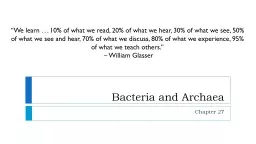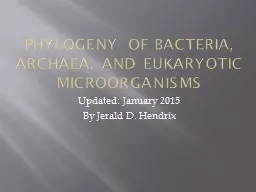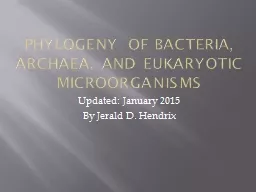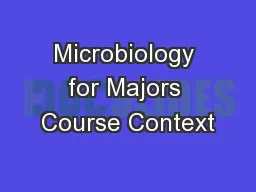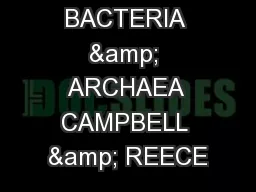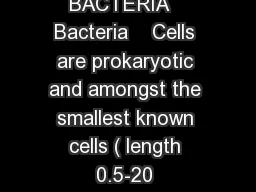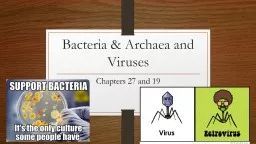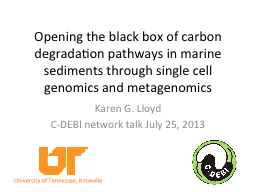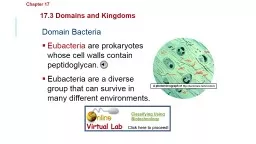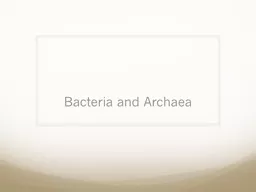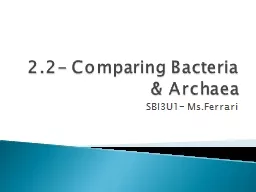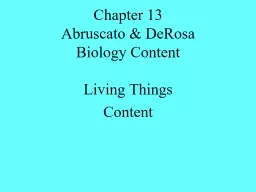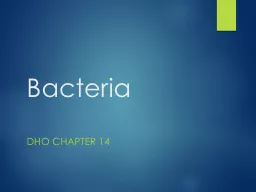PPT-Bacteria and Archaea Chapter 27
Author : basidell | Published Date : 2020-06-23
We learn 10 of what we read 20 of what we hear 30 of what we see 50 of what we see and hear 70 of what we discuss 80 of what we experience 95 of what we teach
Presentation Embed Code
Download Presentation
Download Presentation The PPT/PDF document "Bacteria and Archaea Chapter 27" is the property of its rightful owner. Permission is granted to download and print the materials on this website for personal, non-commercial use only, and to display it on your personal computer provided you do not modify the materials and that you retain all copyright notices contained in the materials. By downloading content from our website, you accept the terms of this agreement.
Bacteria and Archaea Chapter 27: Transcript
Download Rules Of Document
"Bacteria and Archaea Chapter 27"The content belongs to its owner. You may download and print it for personal use, without modification, and keep all copyright notices. By downloading, you agree to these terms.
Related Documents

